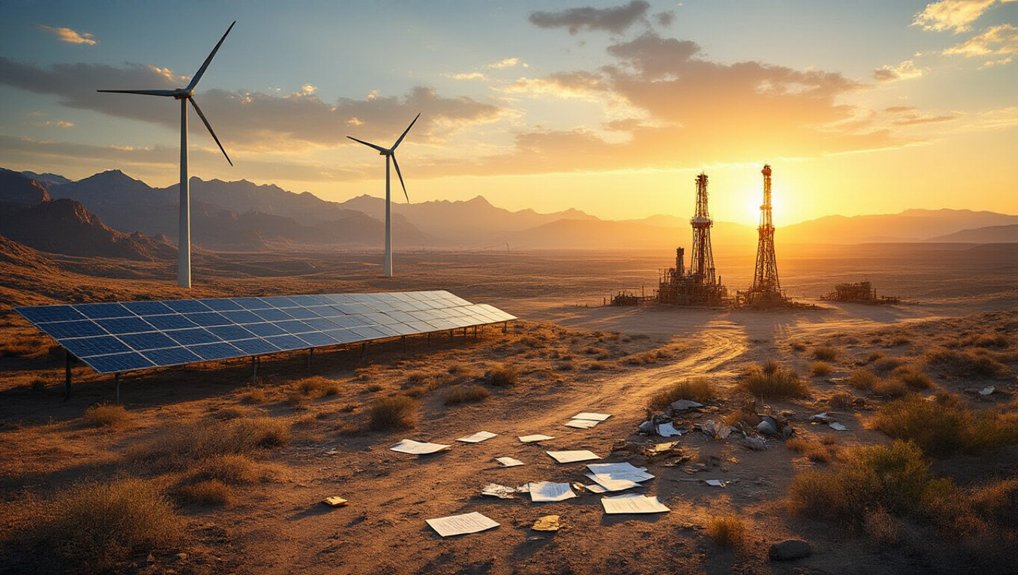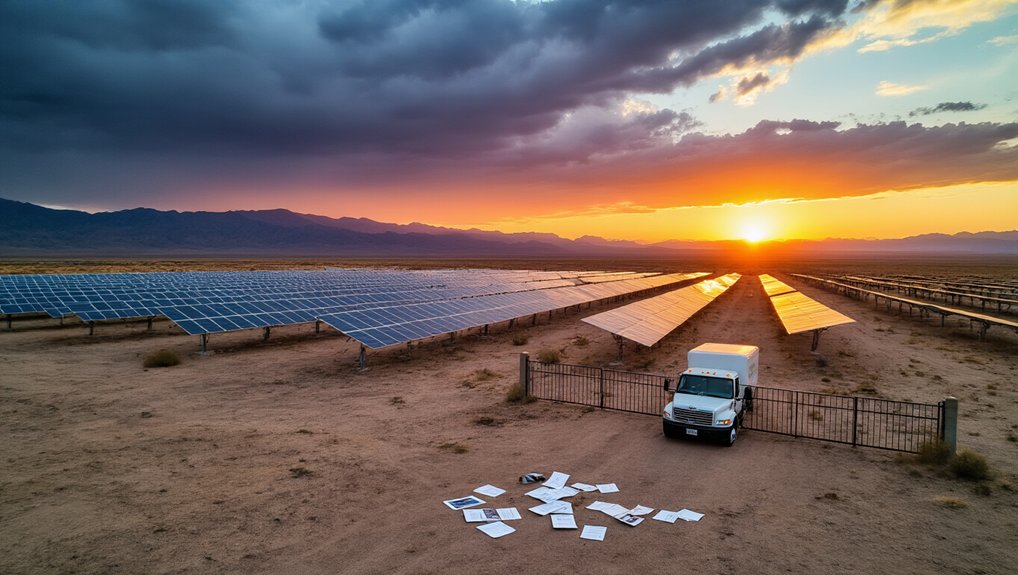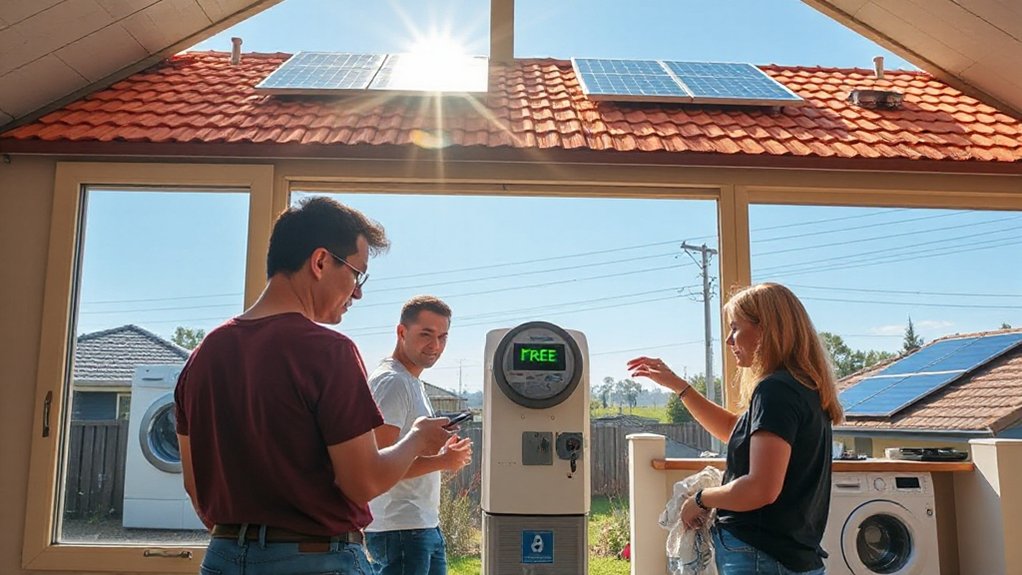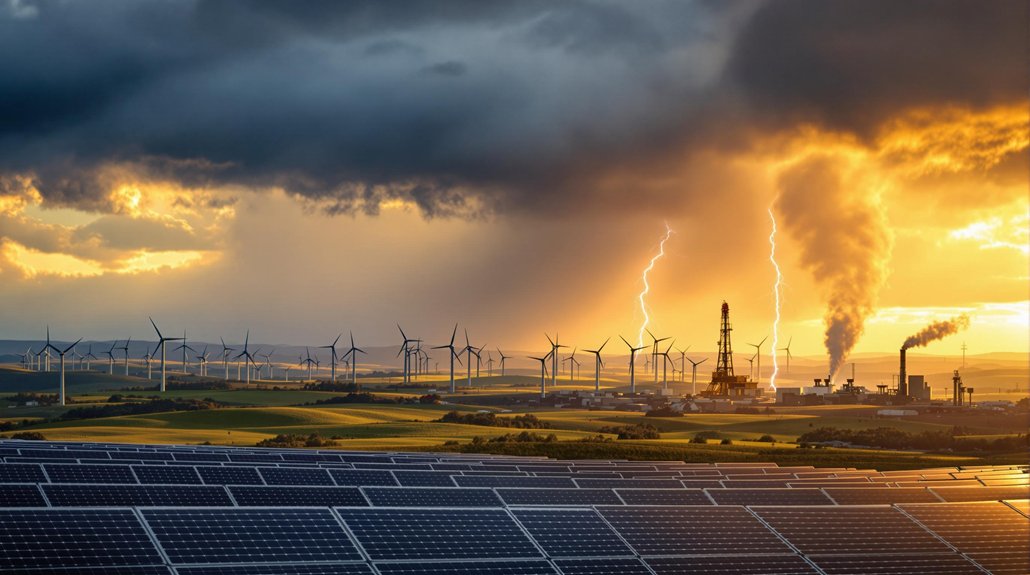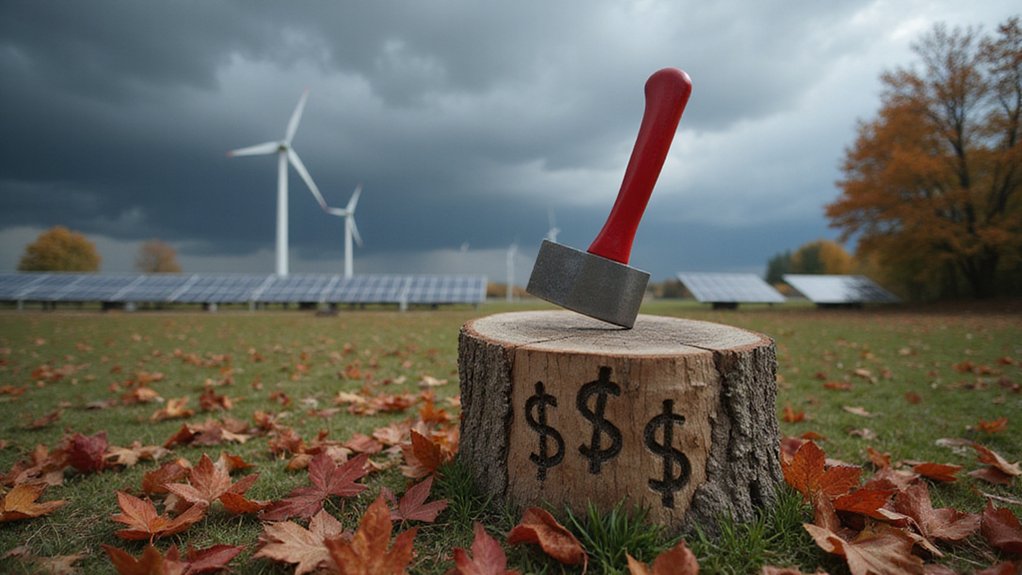The Interior Department just axed eighteen regulations that helped renewable energy projects on federal lands. Biden’s rules gave wind and solar up to 80% discounts on fees. Now they’re gone. The new leadership claims renewables had an unfair advantage, so they’re leveling the playing field—which basically means hiking costs for solar and wind while oil and gas companies watch happily. They promise jobs and economic liberty. Time will tell who actually wins this energy shake-up.
While the Biden administration spent years trying to make wind and solar cheaper on federal lands, the Interior Department just yanked the rug out from under them. Eighteen BLM regulations got the axe, and that intermittent energy rule that favored renewables? Gone. Or at least, it’s on the chopping block.
The Interior Department’s Secretary’s Order No. 3418 kicked off this whole deregulation party. They’re calling it a priority to revise Biden-era regulations, and they’re not exactly being subtle about it. Public comments are due by June 18, 2025, for anyone who wants to weigh in on which energy and environment rules should bite the dust next.
Here’s what really happened: Biden’s rule slashed rental rates and capacity fees for wind and solar projects by up to 80 percent. Want to use American-made parts? Cool, here’s another discount. The new Interior brass says this created an unfair playing field. Traditional energy sectors couldn’t compete with all those renewable perks.
So now we’re back to square one. Oil and gas companies are probably popping champagne bottles. Solar and wind developers? Not so much. Those massive fee reductions are history, which means renewable projects on federal lands just got a whole lot more expensive to operate.
The Interior Department insists this isn’t about picking winners and losers. They claim they’re just removing “self-imposed” regulatory burdens that restrict economic potential. Right. Because nothing says neutral like rescinding rules that specifically helped renewables compete with fossil fuels. The White House recently declared a national energy emergency, adding urgency to these deregulatory moves. This comes as renewable energy stocks have plummeted to 2019 price levels amid rising interest rates and decreased investor confidence.
Officials promise this deregulation bonanza will create jobs and boost energy production, particularly for oil, gas, and critical minerals. They’re betting that fewer rules mean more private investment will flow into federal lands. Past deregulatory efforts supposedly saved industry big bucks, though they’re staying mum on specific numbers this time around. The rule being rescinded was finalized last year and only took effect July 2024, making its reversal swift by government standards.
The whole thing fits neatly into Trump’s broader deregulatory agenda. Executive Order 14192 set the tone: if a rule seems outdated or burdensome, it’s gotta go. Whether this actually frees the “full potential” of natural resources or just tilts the scales back toward traditional energy remains to be seen.
References
- https://www.doi.gov/pressreleases/interior-slashes-outdated-energy-regulations-boost-economic-growth-public-lands
- https://www.doi.gov/pressreleases/interior-initiate-action-rescind-blms-intermittent-energy-rule
- https://www.blm.gov/press-release/interior-slashes-outdated-energy-regulations-boost-economic-growth-public-lands
- https://www.gtlaw.com/en/insights/2025/5/interior-department-seeks-public-input-on-repealing-public-lands-and-natural-resources-rules
- https://www.eenews.net/articles/interior-moves-to-rescind-blm-rule-promoting-renewable-energy/
